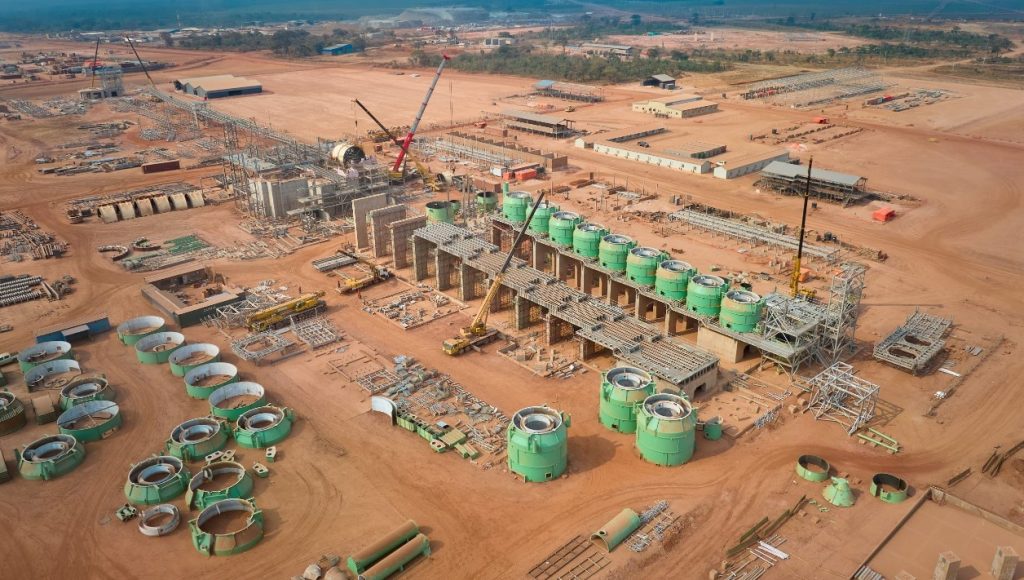Ivanhoe eyes benefits of shipping DRC concentrates by rail

Ivanhoe Mines Ltd. [IVN-TSX, IVPAF-OTC] said Tuesday the first shipment of copper concentrates from the Kamoa-Kakula Copper mine complex in the Democratic Republic of Congo (DRC) has arrived by rail at the Atlantic Ocean port of Lobito in Angola.
The Kamoa-Kakula Copper Project is a joint venture between Ivanhoe Mines (39.6%), China’s Zijin Mining Group (39.6%), Crystal River Global Ltd. (0.8%), and the DRC government (20%). It already ranks among the world’s biggest copper mines, with peak annual production expected to exceed 700,000 tonnes.
The first 1,100-tonne shipment of a 10,000-tonne trial marks the first export of copper utilizing the “Lobito Atlantic Railway Corridor” or “Lobito Corridor,” which is expected to transform economic and social development of the DRC, as well as its neighbouring countries, by accelerating regional economic development.
Time taken to reach the port of Lobito was eight days, compared with approximately 25 days be road to Durban, South Africa.
The rail line, linking the DRC Copperbelt to the port of Lobito extends 1,289 kilometres east, from the port of Lobito to the Angola-DRC border town of Luau. The line then extends a further 450 kilometres east into the DRC, on the Societe Nationale des Chemins de fer du Congo [SNCC] rail network to Kolwezi.
The railway passes within five kilometres of the Kamoa-Kakula Copper Complex license boundary, and through Ivanhoe’s Western Foreland Exploration project.
Currently, Kamoa-Kakula trucks its copper concentrate by road across sub-Saharan Africa to the ports of Durban in South Africa and Dar es Salaam in Tanzania, as well as Beira in Mozambique and Walvis Bay in Namibia. In 2023, approximately 90% of Kamoa-Kakula’s concentrates were shipped to international customers from the ports of Durban and Dar es Salaam, where an average round trip takes between 40 and 50 days. The distance from Kamoa-Kakula to the port of Lobito is approximately half that compared with the port of Durban, and transportation by rail is both quicker and significantly less energy intensive.
Once fully active, Ivanhoe said the Lobito Atlantic Railway Corridor is expected to significantly improve the logistics costs and reduce the Scope 3 emissions carbon footprint of Kamoa-Kakula copper exports. The development of Ivanhoe’s current and future copper discoveries within the Western Foreland basin will also greatly benefit from the Lobito Corridor, the company has said.
“Our first trial shipment is an important milestone on the path to creating a new supply chain linking the Central African Copperbelt to world markets,’’ said Ivanhoe Mines Executive Co-Chairman Robert Friedland. “Establishing a reliable, modern rail link to the port of Lobito, Angola will have transformational benefits for the people of the Democratic Republic of Congo, Angola and Zambia,’’ he said.
“Steel wheels going downhill on steel rails, from over 3,000 feet elevation at Kamoa-Kakula to sea level at Lobito, will lower the cost and carbon footprint associated with producing and exporint our 99.7% copper blister anodes across the Copperbelt.’’
On Tuesday, Ivanhoe shares edged up 0.74% or $0.095 to $12.94 on volume of 248,420. The shares trade in a 52-week range of $14.01 and $9.89.
